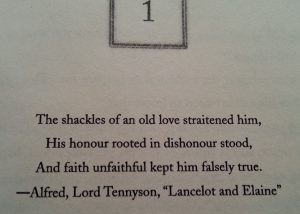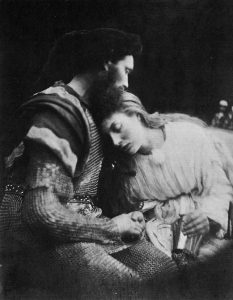 It’s hard to believe that Bear No Malice will be published on Tuesday, January 1, 2019. That is less than three months away! In anticipation of the novel’s release, I’m going to post a different epigraph (the quotations that appear at the beginning of each chapter) every second Tuesday, starting today. I’ll talk a little about why I love the texts they are taken from and what made me choose them for my novel. I’ll avoid spoilers!
It’s hard to believe that Bear No Malice will be published on Tuesday, January 1, 2019. That is less than three months away! In anticipation of the novel’s release, I’m going to post a different epigraph (the quotations that appear at the beginning of each chapter) every second Tuesday, starting today. I’ll talk a little about why I love the texts they are taken from and what made me choose them for my novel. I’ll avoid spoilers!
I love Victorian poetry. When I first discovered it as an undergraduate English major, I was delighted by its richness and by the ways in which the metre worked with (and sometimes against) the words to add a third layer of meaning. This can be said of all good poetry, of course, but for me Victorian poetry was an endless treasure trove of beauty that yielded more nuances of meaning the deeper I dived into it.
With Tennyson, it was love at first tetrameter. His long elegy for the death of his friend Arthur Hallam, In Memoriam, was said to be Queen Victoria’s favourite book after the Bible, and I could immediately understand why. I had never before read such a personal elegy, especially one written by a man. The hauntingly beautiful expression of his grieving process gives me chills and brings tears to my eyes every time I read it. If you’ve lost a loved one, this stanza alone may affect you as it does me:
For this alone on Death I wreak
The wrath that garners in my heart;
He put our lives so far apart
We cannot hear each other speak.
I have chills again just from typing these lines.
But I digress. The Tennyson epigraph in the photo above for Chapter 1 of Bear No Malice is not about grief. It’s about the paradoxes of love and the way that Lancelot’s honour as a knight is “rooted in dishonour” because of his relationship with Guinevere, King Arthur’s wife. Lancelot is supposed to be a model knight, but his love for Guinevere crosses the line into adultery. Staying true to her makes him “falsely true” to the fair maid Elaine, whom he might have loved had he not met Guinevere first. The oxymorons in the quoted lines perfectly represent his dilemma and the way his actions contradict his beliefs: “faith unfaithful,” “falsely true.”
Tom Cross begins Bear No Malice in a similar position to Lancelot’s. He isn’t a knight, but the virtues he tries to live by are similar to the virtues of Arthur’s knights. Tom is an Anglican (not Catholic) priest, so he is free to marry, but in all other ways he must remain pure; Arthur’s knights, too, were expected to be pious Christians. Instead of staying pure, Tom has become entangled in a sexual relationship with a married woman. He has violated his own code of honour and God’s standards as a Christian leader, and no matter how hard he tries to change, his past mistakes keep catching up with him.

The Lancelot and Elaine story is woven throughout Bear No Malice, but not necessarily in ways you would expect. The famous painting of Elaine (known as the Lady of Shalott) by John William Waterhouse also plays a role in the novel. My friend and fellow author Kris Waldherr has written an excellent blog post about the influence of this painting on her writing. Kris and I are uncannily similar in our interests, especially regarding the art and culture of the Victorian era. Victorian photography and art blend beautifully in Kris’s debut novel The Lost History of Dreams (I’ve had the privilege of reading an early copy). The Victorian photograph I’ve posted here is one of my favorites because it depicts Lancelot and Guinevere through the lens of the amazing Victorian photographer, Julia Margaret Cameron, whom Kris has written about as well.
Compared to Impossible Saints, Bear No Malice is a little less political and a little more literary. Tom and Miranda, the protagonists, see the world and each other in relation to the art and literature they love, and they’re not prepared for the ways in which others defy their preconceptions. But both novels are set in the same world (Paul and Tom appear in both novels) and interrogate the tension between faith and feminism in the Edwardian era.
You can pre-order Bear No Malice through the links on my home page. Please comment below if art and literature have shaped your own life and/or work: I’d love to hear from you!